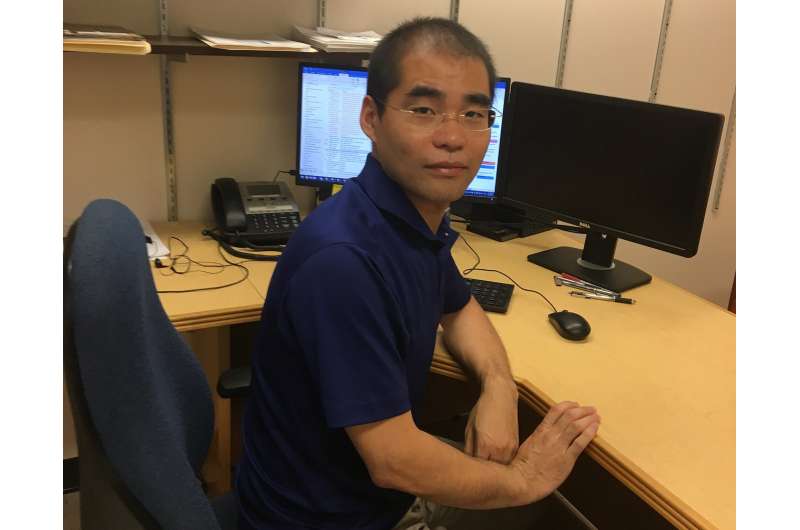Purdue University’s Xiumin Diao led a team to create a weight support system to help people suffering from walking disabilities after a stroke. Credit: Purdue University
A Purdue University researcher with a passion to use engineering technology to improve health care has created a weight support system to help people suffering from walking disabilities after a stroke. The Centers for Disease Control and Prevention says about 795,000 people in the United States have a stroke each year, and it is the leading cause of disability in older adults.
The Purdue team created an alternative to traditional gait rehabilitation training, an important part of retraining the legs for proper walking after a stroke or trauma.
"We applied our engineering expertise to create a better device for people learning to walk again," said Xiumin Diao, an assistant professor in Purdue's School of Engineering Technology.
The cable-driven body weight support system helps support walking training across all three dimensions, not just in the vertical direction like many current options.
Purdue's weight support system uses thin, strong cables attached to a manipulator that secures around the patient in a fashion similar to a parachuting harness. The system compensates for any amount of a person's body weight in all three dimensions as they learn to retrain their legs for proper walking.
"This is a much more responsive system," Diao said. "We provide increased support based on the fact that normal walking undergoes 3-D motion. Our body weight support system eases the burden on the patient. Given its economical features, it may one day provide support for low-income patients who may not have the resources for current training."
Diao said the Purdue system is easier to reconfigure than traditional training systems and provides a lower equipment cost. He said the system is also easier to put together and take apart and provides a larger training space than current systems on the market.
Provided by Purdue University























